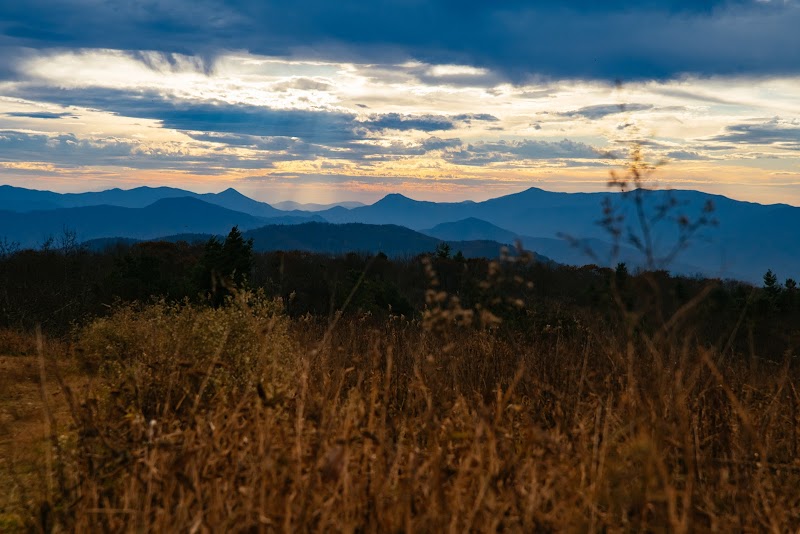
Trekking the Appalachian Trail Near Elizabethton: Mountain Views and Timber Trails
Explore the Appalachian Trail sections near Elizabethton, Tennessee, where forested climbs and rocky ridges give way to breathtaking mountain views. This practical guide combines detailed trail information with tips to help you prepare for a rewarding hiking experience.
Pack for Varied Terrain
Expect rocky trails and slippery slopes; sturdy hiking boots with good ankle support will safeguard your steps across uneven ground.
Hydration is Non-Negotiable
Carry a hydration system and know where water refill points are located as roots and rocks demand energy, especially in warmer months.
Start Early to Maximize Daylight
Begin your hike early to avoid afternoon heat and to take advantage of softer morning light for clear views and better photography opportunities.
Weather Can Shift Fast
Bring layered clothing and rain gear; mountain weather near Elizabethton can turnaround quickly from sunny to stormy conditions.
Trekking the Appalachian Trail Near Elizabethton: Mountain Views and Timber Trails
The Appalachian Trail section near Elizabethton, Tennessee offers an invigorating hike through rugged mountain terrain, where ancient forests give way to open ridges with panoramic views of the surrounding ranges. This stretch tests your endurance with varied elevation gains up to 1,500 feet, spread across 6 to 10-mile segments of trail that dispatch through rhododendron thickets and hardwood canopies. The path challenges you to engage with a landscape fiercely itself—rocks jutting underfoot, streams daring your steps to steady. Expect forested paths rich with the scent of pine and earth, punctuated by moments when the trees part and reveal sweeping mountain vistas that seem to stretch endlessly.
Starting near Elizabethton, hikers can approach popular sections like the Roan Highlands segment, where the trail climbs high ridges that open to 270-degree views of the Unaka Mountains, or the Watauga Lake overlook, a quiet spot where the water seems to hold the mountain’s reflection steady. The terrain combines packed dirt with rocky outcrops, so boots with solid ankle support are a must. Prepare for a moderate pace; the trail negotiates climbs and descents that reward both muscle and mindfulness.
Hydration is key—physically demanding stretches under the sun call for more than just a water bottle. Use hydration packs and plan refill points at streams or trailheads. Early spring to late fall offers the most stable weather: spring bursts with wildflowers and fresh green leaves, fall cloaks the mountains in crisp colors, and summer provides dense shade but higher humidity. Winter hiking is possible but requires experience and equipment for icy paths.
For planning, consider your pace to include rest stops where the views encourage lingering. Campsites near the trailheads cater to both solo hikers and groups, making it easier to balance exertion with recovery. The Appalachian Trail here demands respect—weather can shift quickly, and the landscape tests both your physical stamina and your ability to read the environment. Taken seriously, this hike offers not only striking visual rewards but a chance to engage deeply with a mountain environment that remains true to its wild nature.
Nearby Trips
All Adventures
Boat Charters
Water Activities
Adventures near Elizabethton, Tennessee
Discover the unique and memorable adventures that make Elizabethton, Tennessee special.
Frequently Asked Questions
What is the best trail section near Elizabethton for mountain views?
The Roan Highlands section just east of Elizabethton offers some of the most expansive, panoramic mountain views on the Appalachian Trail, especially near Carvers Gap and Grassy Ridge Bald.
Are there trail amenities like water sources and campsites along this section?
Yes, several backcountry shelters and campsites are spaced roughly 5 to 7 miles apart, with natural water sources such as streams, but quality and availability can vary seasonally—carry filter equipment.
How should I prepare for sudden weather changes here?
Bring layered clothing, waterproof gear, and keep abreast of local forecasts before you hike. Carrying an emergency blanket and whistle is advisable due to swift weather shifts.
Is the trail suitable for beginners?
While parts are accessible for beginners with moderate fitness, the rocky terrain and elevation changes mean good preparation and cautious pacing are essential for newcomers.
What wildlife might I encounter on this trail?
Expect to see white-tailed deer, black bears (usually shy), various songbirds, and smaller mammals like squirrels. Be bear aware and store food properly.
When is the best time to hike for fall colors?
Mid to late October is generally peak time for fall foliage, when oak, hickory, and maple trees color the landscape vibrant reds, oranges, and yellows.
Recommended Gear
Hiking Boots
Supportive, waterproof boots reduce risk of injury and keep feet comfortable across mixed terrain.
Hydration Pack
Allows quick access to water and encourages frequent hydration, critical during longer climbs.
Layered Clothing System
Adjust to changing temperatures and weather by layering breathable, moisture-wicking fabrics and outer rain protection.
Trekking Poles
Helpful for balance on rocky or uneven parts and to reduce strain during steep ascents and descents.
Local Insights
Hidden Gems
- "White Rocks Overlook just off the trail offers an uncrowded vantage point with sweeping views of the Watauga River valley."
- "The Doe River Trail connects nearby and provides a quieter alternative with lush riparian scenery."
Wildlife
- "Black bear activity peaks in late summer and fall—be vigilant and respectful of their territory."
- "Ruffed grouse and hermit thrushes fill the woods with distinctive calls, particularly at dawn."
History
"Elizabethton and surrounding Carter County have roots tied to early Appalachian settlers and the Overmountain Men, who played a key role in the Revolutionary War, adding a historical layer to the outdoor experience."
